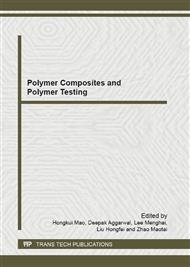p.350
p.355
p.360
p.366
p.370
p.376
p.380
p.384
p.388
Test Methods for Suspended Load Abrasion and Bed Load Abrasion on Hydraulic Concrete
Abstract:
The machanisms of suspended load abrasion and bed load abrasion are different, but they are not distinguished in the current test methods to evaluate the abrasion resistance of concrete. The abrasion resistance to bed load can be tested by underwater method, and to bed load can be tested by ring speciman method. To study the influence of mixture parameters of concrete to these two machanisms, concretes with different aggregates, different dosage of fly ash and different strength grade were tested by high speed underwater method and high speed ring speciman method. The results showed that the amount of cementing materials and the types of fine aggregate had a significant effect on the high-speed ring specimen method, but it wasn’t affected by the class of strength, so this method only reflected the abrasion resistance of the outer concrete and was easily influenced by the quality of concrete surface; high-speed underwater method was just only related to the types of aggregate, and had little effect on the rest, so it could reflect the abrasion resistance of the inner concrete without caring about the quality of concrete surface. Therefore, choosing different test methods for evaluating the abrasion resistance of concrete should be based on the actual condition in the projects.
Info:
Periodical:
Pages:
370-375
Citation:
Online since:
April 2012
Authors:
Price:
Сopyright:
© 2012 Trans Tech Publications Ltd. All Rights Reserved
Share:
Citation:


